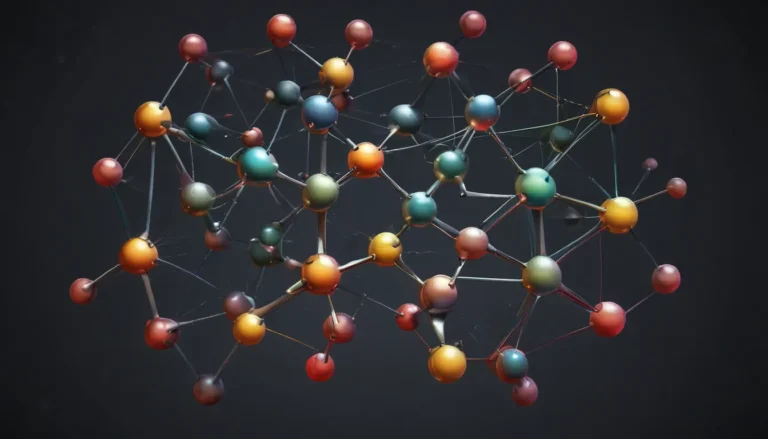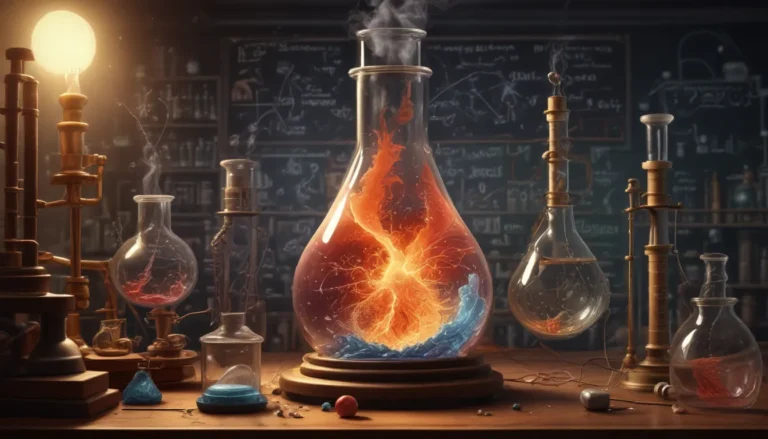A Note About Images: The images used in our articles are for illustration purposes only and may not exactly match the content. They are meant to engage readers, but the text should be relied upon for accurate information.
Chemistry is a captivating field that unravels the mysteries of the elements and their behavior. One fundamental concept that holds the key to understanding chemical compounds is ionization energy. This article will delve into the fascinating world of ionization energy and uncover 10 astonishing facts that will broaden your understanding of this essential concept in chemistry.
Ionization Energy Defined
Ionization energy is the amount of energy required to remove an electron from an atom or ion in the gaseous state. It serves as a crucial indicator of an element’s reactivity and its position within the periodic table. Understanding ionization energy is vital for comprehending the behavior and properties of elements.
Trends in Ionization Energy
The trends in ionization energy across the periodic table reveal important insights about the behavior and characteristics of elements. Generally, ionization energy increases from left to right across a period due to the increasing nuclear charge and decreasing atomic radius. Conversely, ionization energy decreases as you move down a group in the periodic table.
Noble Prize Connection
Irving Langmuir, a Nobel Prize-winning chemist in 1932, made significant contributions to our understanding of ionization energy. His work on atomic structure and chemical bonding greatly advanced the field of chemistry.
Ionization Energy and Reactivity
Elements with low ionization energy are highly reactive as they readily lose electrons to form positive ions. On the other hand, elements with high ionization energy are less reactive as they require more energy to remove an electron. This connection between ionization energy and reactivity sheds light on the behavior of elements in chemical reactions.
Ionization Energy and Periodic Table Groups
Moving down a group in the periodic table results in a decrease in ionization energy. This is because electrons in the outer energy levels are further from the nucleus and experience less attractive force, making them easier to remove. Understanding this trend provides valuable insights into the behavior of elements within a group.
Ionization Energy and Atomic Radius
An inverse relationship exists between ionization energy and atomic radius within a period. As the atomic radius decreases, electrons are held more tightly, leading to higher ionization energies. This relationship highlights the importance of atomic radius in determining ionization energy.
Multiple Ionization Energies
Each electron removal in an atom requires a specific amount of energy, resulting in multiple ionization energy levels. The first ionization energy is the energy required to remove the first electron, while subsequent ionization energies increase. This phenomenon underscores the complex nature of ionization energy within an atom.
Ionization Energy and Electron Configuration
The electron configuration of an atom plays a crucial role in determining its ionization energy. Elements with stable electron configurations, such as noble gases, have high ionization energy due to the difficulty in removing tightly held electrons. Understanding the relationship between electron configuration and ionization energy provides valuable insights into the stability of elements.
Ionization Energy and Periodic Trends
The periodic trends in ionization energy closely relate to other periodic properties such as electronegativity, atomic radius, and metallic character. These properties collectively provide insights into the behavior and characteristics of elements, offering a holistic view of the periodic table and its elements.
Practical Applications of Ionization Energy
Ionization energy finds practical applications in various fields, including determining the reactivity of elements, understanding chemical bonding, and identifying unknown compounds through techniques like mass spectrometry. The practical applications of ionization energy highlight its significance in chemical analyses and research.
In conclusion, ionization energy is a captivating concept that plays a crucial role in understanding the behavior of elements and their ability to form bonds. By exploring the 10 astonishing facts about ionization energy, we have gained valuable insights into its definitions, trends, and practical applications. Ionization energy serves as a cornerstone in the field of chemistry, unlocking new dimensions of knowledge and understanding.
FAQs About Ionization Energy
- What is ionization energy?
Ionization energy is the energy required to remove an electron from an atom or ion in the gaseous state.
- How is ionization energy measured?
Ionization energy is measured in units of energy per mole, such as kilojoules per mole (kJ/mol) or electron volts (eV).
- Why does ionization energy decrease down a group?
Ionization energy decreases down a group because the outermost electrons are farther from the nucleus and are therefore less strongly attracted.
- Which elements have the highest ionization energies?
The noble gases, such as helium and neon, have the highest ionization energies.
- How does ionization energy relate to an element’s reactivity?
Elements with low ionization energies tend to be more reactive, as they are readily able to gain or lose electrons in chemical reactions.
- Can ionization energy be negative?
No, ionization energy is always positive, as energy must be supplied to remove an electron from an atom or ion.
- How is ionization energy used in practical applications?
Ionization energy is used in various practical applications, including determining the electron configuration of elements and predicting chemical reactivity.
Ionization energy is a fascinating concept that unveils the intricate world of chemical interactions and periodic trends. By exploring the essential facts about ionization energy, we gain a deeper understanding of the elements and their properties. Let’s continue to explore the wonders of chemistry and unlock the secrets of the periodic table through the fascinating lens of ionization energy.






